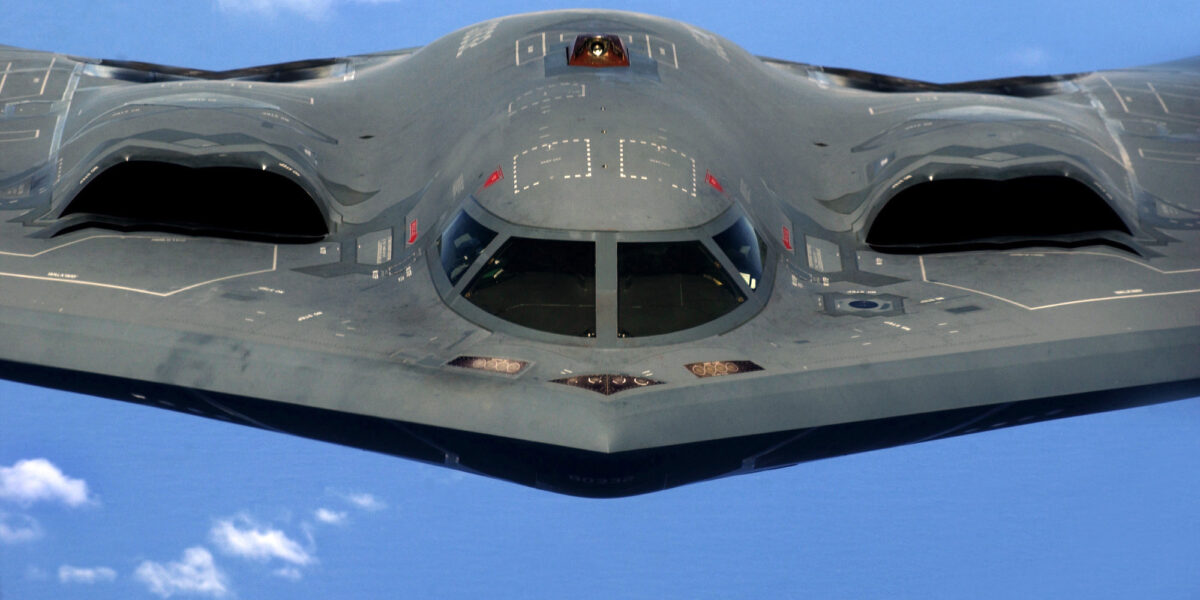The B-2 Spirit stealth bomber represents one of the most advanced aircraft ever built, and its cockpit reflects decades of cutting-edge aerospace engineering. This flying wing design houses a sophisticated workspace where two crew members manage one of the world’s most capable strategic bombers.
Cockpit Layout and Design Philosophy
Unlike traditional bomber cockpits, the B-2’s flight deck prioritizes stealth integration and workload reduction. The two-person crew sits side by side in ACES II ejection seats, with the aircraft commander on the left and the mission commander on the right. This arrangement allows for efficient communication and shared situational awareness during missions that can last over 40 hours with aerial refueling.
The cockpit features a dark, subdued interior designed to minimize light emissions that could compromise stealth. All displays and controls use carefully filtered lighting that won’t create detectable signatures. The canopy design incorporates special coatings that reduce radar reflectivity while still providing adequate visibility.
Primary Flight Displays
The B-2 cockpit centers around four large color multifunction displays (MFDs) that can be configured to show various combinations of flight data, navigation information, weapons status, and defensive systems. These displays replaced the traditional analog gauges found in older bombers like the B-52.
The primary flight display shows essential flight parameters including airspeed, altitude, attitude, and heading. The horizontal situation display provides navigation data and can overlay terrain information for low-level penetration missions. Additional displays handle weapons management, defensive systems, and system status monitoring.
Flight Control System
The B-2 uses a quadruplex digital fly-by-wire flight control system—essential for an aircraft with no vertical tail surfaces. The system continuously makes thousands of adjustments per second to maintain stable flight, as the flying wing design is inherently aerodynamically unstable. Pilots interact with conventional control sticks and throttles, but all inputs are processed through flight computers before reaching control surfaces.
The aircraft features split drag rudders on the wing trailing edges, elevons for pitch and roll control, and a beaver tail for additional pitch authority. The fly-by-wire system coordinates all these surfaces automatically based on pilot inputs and flight conditions.
Navigation and Targeting Systems
The B-2’s navigation suite includes GPS receivers, inertial navigation systems, and terrain-following radar. The AN/APQ-181 radar provides ground mapping, targeting, and terrain avoidance capabilities while maintaining low probability of intercept characteristics.
For weapons delivery, the crew uses the GPS-Aided Targeting System (GATS) combined with the AN/APQ-181 radar. This allows precision strikes with GPS-guided munitions like the JDAM, or radar-guided targeting for other ordnance. The weapons bays can accommodate up to 40,000 pounds of conventional or nuclear weapons.
Defensive Systems Integration
The defensive management system provides the crew with situational awareness about potential threats. The AN/APR-50 defensive management system detects and categorizes radar emissions, displaying threat information on dedicated displays. This allows the crew to adjust their flight path or employ countermeasures as needed.
The cockpit also integrates communications systems capable of receiving mission updates and targeting data via satellite links, enabling the B-2 to respond to changing battlefield conditions even during extended missions.
Crew Accommodations
Given the B-2’s ability to fly missions exceeding 30 hours, the cockpit includes provisions for crew comfort. A small rest area behind the seats allows one crew member to sleep while the other maintains aircraft control. The cockpit also features a toilet facility and provisions for food and water storage.
The environmental control system maintains a comfortable cabin environment at altitudes exceeding 50,000 feet. Crew members wear standard flight suits rather than pressure suits for most missions, though provisions exist for high-altitude contingencies.
Modern Upgrades
The B-2 fleet continues to receive avionics upgrades to maintain combat relevance. Recent modernization efforts have focused on improving the radar system, updating communications capabilities, and integrating new weapons. The cockpit displays and computers have been upgraded multiple times since the aircraft entered service in 1997.
Future upgrades planned as part of the B-2’s continued service life include new processors, improved defensive systems, and integration with the emerging B-21 Raider’s support infrastructure. These modifications ensure the B-2 remains a viable strategic asset well into the 2030s.




Subscribe for Updates
Get the latest articles delivered to your inbox.
We respect your privacy. Unsubscribe anytime.